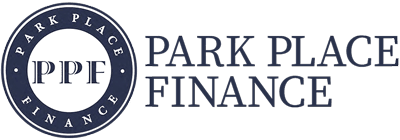Real estate investment might seem like a no-lose situation, but it is far from it. Savvy real estate investors know that success takes hard work, patience, level-headedness, and a little bit of math. The 70% rule is a quick, back-of-the-envelope calculation that informs real estate investors of whether a deal is worth it. In this blog, we’ll show you how to use the 70% rule in real estate investing to increase your chances of success.
What is the 70% rule?
The 70% rule is a calculation that helps real estate investors decide whether or not to invest in a property. To calculate the 70%, you need first to calculate the expected after-repair value (ARV) of the property. Look at similar properties in the same neighborhood and see what price they’ve sold for recently. Once you have your estimated ARV, multiply that number by 70%. Then, subtract the estimated cost of repairs. If an investor can purchase the property for less than this, there’s likely to be a worthwhile return on their investment.
However, keep in mind that the “leftover” 30% is not all profit. There are many other costs associated with the transaction besides the repairs.
70% Rule:
(ARV * .70) – Estimated Expenses = Suggested Offer Price
When to use the 70% rule?
Use the 70% rule as often as you can, but don’t take it as a guarantee. Just because a deal looks good in theory doesn’t mean you can count your chickens before they hatch. When we calculate the 70% rule, we use estimates for the ARV and expenses. That means there is always the possibility that we underestimate how much renovations will cost or overestimate just how much we’ll be able to command for the property once it goes on the market.
It’s good practice to start approaching every real estate deal with the 70% rule because it’s a reasonable “rough estimate” on the value of a deal. If you calculate a suggested offer price that is far below what the property is listed for, this is a clear indicator that you should pass on the deal.
How to calculate the estimated costs and ARV?
Your 70% rule might differ from mine. You may have a lot more experience than I do in real estate investment, which means you will know just how much the costs of repairing and flipping a house can vary. Of course, if you can tour the property and notice some crumbling infrastructure, you’ll have to account for that in your calculations. A structural fix could end up costing much more than you anticipated, leaving little extra for the attractive cosmetic improvements that appeal to buyers.
The best way to get better at estimating ARV and expenses is to get more practice. If you have friends or family that are real estate investors, talk with them about how they approach and assess deals. Start building a network of appraisers and contractors so you can get information and bids quickly. Ask them about any deals they’re currently working on. And, of course, get started with real estate investment yourself!
Conclusion
The 70% rule is really intended to be used as an estimate for getting into real estate deals that are slightly outside your comfort zone but still good investments. There’s no one-size-fits-all 70% rule, but if you’re looking for a simple way to assess deals and find good investments quickly, this is it. Are you ready to get started in real estate investing and put your skills to work? Contact us at Park Place Finance to get set up with fast, easy financing so you can close deals in no time.
